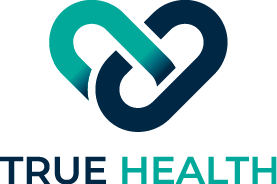Chiropractic and Spinal Stenosis
Spinal stenosis is a condition where the spinal canal narrows, putting pressure on the spinal cord and nerves. This can result in pain, numbness, tingling, or weakness, often in the lower back or legs. It commonly occurs due to age-related degeneration, arthritis, disc bulges or bone overgrowth in the spine. While the structural narrowing itself cannot be reversed, managing symptoms and maintaining mobility is often possible with conservative treatments, including chiropractic care.
How Chiropractic Care May Help
Chiropractic care focuses on improving spinal function and reducing musculoskeletal stress. Some research suggests that manual therapy and movement-based approaches may provide relief for individuals with spinal stenosis. A study published in The Journal of Chiropractic Medicine indicated that flexion-distraction therapy—a specialised spinal decompression technique—may help reduce symptoms in some patients (Cox, 2009).
At True Health, we prioritise gentle, tailored techniques that aim to relieve discomfort and support mobility. While individual outcomes vary, chiropractic care may assist by:
- Improving spinal movement through specific mobilisation techniques.
- Reducing muscular tension with soft tissue therapy.
- Enhancing posture and movement patterns to minimise strain on affected areas.
- Providing exercise-based recommendations to strengthen muscles and improve flexibility.
Best Chiropractic Techniques for Spinal Stenosis
For patients with spinal stenosis, selecting the appropriate chiropractic technique is crucial. Flexion-distraction therapy, a gentle decompression method, has been identified as one of the more effective approaches for relieving nerve compression and increasing spinal space. While we do not have a flexion-distraction table at our clinic, we use other gentle, low-force methods, such as:
- Activator Method – A handheld instrument that delivers precise, low-impact adjustments.
- Mobilisation techniques – Designed to improve joint movement without excessive force.
- Soft tissue therapy – Aimed at reducing muscle stiffness and tension around the spine.
Managing Spinal Stenosis: Additional Considerations
- Spinal stenosis is a progressive condition, meaning symptoms may worsen over time. Regular assessments can help monitor changes and adjust treatment plans accordingly.
- In severe cases, individuals with spinal stenosis may require additional interventions, such as physiotherapy, pain management strategies, or surgical consultation.
- Incorporating gentle movement exercises, stretching, and postural corrections into daily life may help alleviate symptoms and improve overall function.
- A multidisciplinary approach, including input from medical professionals, may be beneficial for comprehensive symptom management.
Conclusion
While chiropractic care does not reverse the narrowing of the spinal canal, it may help manage musculoskeletal discomfort and mobility issues associated with spinal stenosis. Individual responses to treatment vary, and a personalised approach is essential to determine whether chiropractic care is a suitable option.
If you are experiencing chronic back pain, leg numbness, or difficulty walking, seeking advice from a qualified healthcare professional can help determine the most appropriate course of action.
Contact us today to learn more about chiropractic care and how it may support your spinal health.


